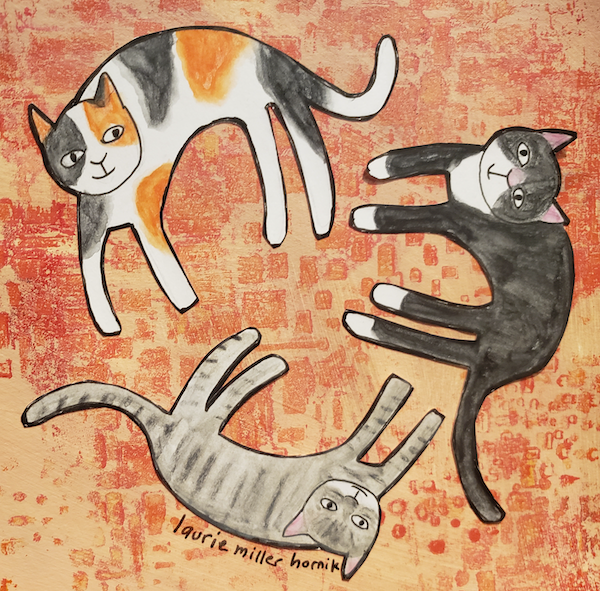4 Tips to Support Group Work in Middle School
By Laurie Miller Hornik
 Group work has become a regular practice in many middle school classrooms, and plenty of research shows it should be. According to Washington St. Louis University Center for Teaching and Learning, group work leads to “increased individual achievement” and “enhance[d] communication and other professional development skills.”
Group work has become a regular practice in many middle school classrooms, and plenty of research shows it should be. According to Washington St. Louis University Center for Teaching and Learning, group work leads to “increased individual achievement” and “enhance[d] communication and other professional development skills.”
And middle school teachers know that their students tend to be social learners and enjoy engaging with each other.
So why do so many students dread group work?
A high school student, Yun F. Zheng, describes why in “I’m a Student. Here’s Why Group Work Feels So Unfair,” explaining that students who care about grades often feel like they need to do the work for their group members so their own grades don’t go down. Zheng also describes the logistical challenges of coordinating group assignments outside of class.
These objections are consistent with my observations. Yet it still feels worthwhile to give students opportunities to work in groups. Here are four specific ways teachers can amplify the positive effects of group work and minimize the negative ones:
1. Give Everyone the Best Role
Sometimes teachers assign different roles in a group project: timekeeper, recorder, presenter, questioner, and so on. But usually there is one role that is directly connected to the project’s main learning goal. If the project is about public speaking, then the presenter role is so much more important than the timekeeper or recorder role that everyone should be a presenter.
When we conduct mock trials in my English class, everyone gets to be a lawyer because the project is about critical thinking and debating, so being a witness or a judge or a bailiff wouldn’t provide the key experiences.
In classes with diverse learners, it may be tempting to give stronger students the more challenging and interesting roles. But what is the purpose of the project? If the purpose is about the product – to produce the best possible mock trial or play or Google slide presentation – then it could make sense to give the strongest students the best roles. But if the purpose is about learning – every single student’s learning – then each student needs to have a learning role rather than play a supporting role to other students’ learning.
2. Grade the Process, Not the Product
Group work is most effective when it is such an enjoyable and meaningful experience that it doesn’t need to be graded at all: students work hard because they care about the project. If students are overly focused on a product grade, they might see their fellow group members as potential tools for – or obstacles to – their getting a high grade. Telling students upfront that the end product will not be graded helps foster feelings of collaboration and empathy rather than competition and resentment.
At the beginning of a group project, I tell my students that while the project will not be graded, as always, students’ individual engagement “counts.” I’ve shifted to using the word engagement instead of participation as the latter can make students think that they should aim to be the most frequent speaker or be able to claim full responsibility for a specific part of the project. These behaviors are not helpful to a successful group learning situation.
“Engagement” refers to student involvement throughout the learning environment and is characterized by the curiosity, interest, and attention students give to the material and to each other. In my classes, students use engagement rubrics to reflect on their own engagement during group work and other class activities. In addition, I take notes on what I see and let students know if my assessment of their engagement is different from theirs.
Another way to assess individual engagement and learning is to assign individual writing after the project. For our Lord of the Flies unit, students complete a group project similar to a mock trial and then write individual essays addressing the same question as that of the group project. The group project gives the students the opportunity to learn from and with each other, and the individual essay gives them the opportunity to demonstrate their individual learning.
In another unit I teach students discussion and listening skills, which they use to practice discussing poems in student-led fishbowl discussions and observing what makes for good discussions. Afterwards each student writes an individual essay about one of the poems based on what they learned from engaging in or watching a discussion.
3. Teach Students How to Work in Groups
Like anything else, group work is a skill that can and should be taught. Teachers can give students the concrete scaffolding they need to communicate with each other. Sentence stems like these can help orient students toward balancing listening and speaking:
“I agree with _____, and I also wonder _____”
“I heard you say _______. This makes me think _______”
“Building on what ______ just said, _________”
Part of the fun of working in a group is deciding what the group needs to do next. While students do need some scaffolding about what to do next, they also need room to decide that their particular group needs to spend longer on one step or is ready to move ahead to another.
Try beginning each day of group work with a mini-lesson to help focus the groups on a particular skill they are likely to need that day. Sometimes it’s helpful to have each group make a plan for the period and share it with the teacher or with the whole class.
As with other types of learning, it’s helpful to create regular opportunities for reflection along the way – both individual reflection and reflection on the whole group’s work. When reflecting on the whole group – which includes the behaviors of others – it is useful to keep this wholly positive.
Yes, students will notice behaviors of others that are not helpful, but stating these aloud can feel harsh and hinder a sense of group trust. Rather, teach students to focus on what the group and specific individuals are doing well and how they can build on those strengths.
4. Use class time for group work
Using class time for all group project work instead of assigning it as homework makes it easier for the teacher to assess student engagement. In addition, it eliminates the pressures on students to coordinate when they will meet – physically or virtually – outside of class.
Middle school students often don’t have control over their outside-of-school schedules. Limiting group work to class time keeps the focus on the learning instead of the logistics. It also gives the teacher the opportunity to walk around and teach skills on the spot as needed.
A double payoff
When group work in middle school is set up to amplify students learning from and with each other, both the learning and the sense of community will increase. Group projects are worth doing in middle school classrooms, and they are worth doing well.
Laurie Miller Hornik is a K-8 educator with over 30 years of experience. Currently, she teaches seventh grade English at the Ethical Culture Fieldston School in NYC. Laurie is the author of two middle-grade humorous novels, The Secrets of Ms. Snickle’s Class (Clarion, 2001) and Zoo School (Clarion, 2004). She writes a weekly Substack of humorous essays called Sometimes Silly, Sometimes Ridiculous and creates mixed media collages, which she shows and sells locally and on Etsy.






























